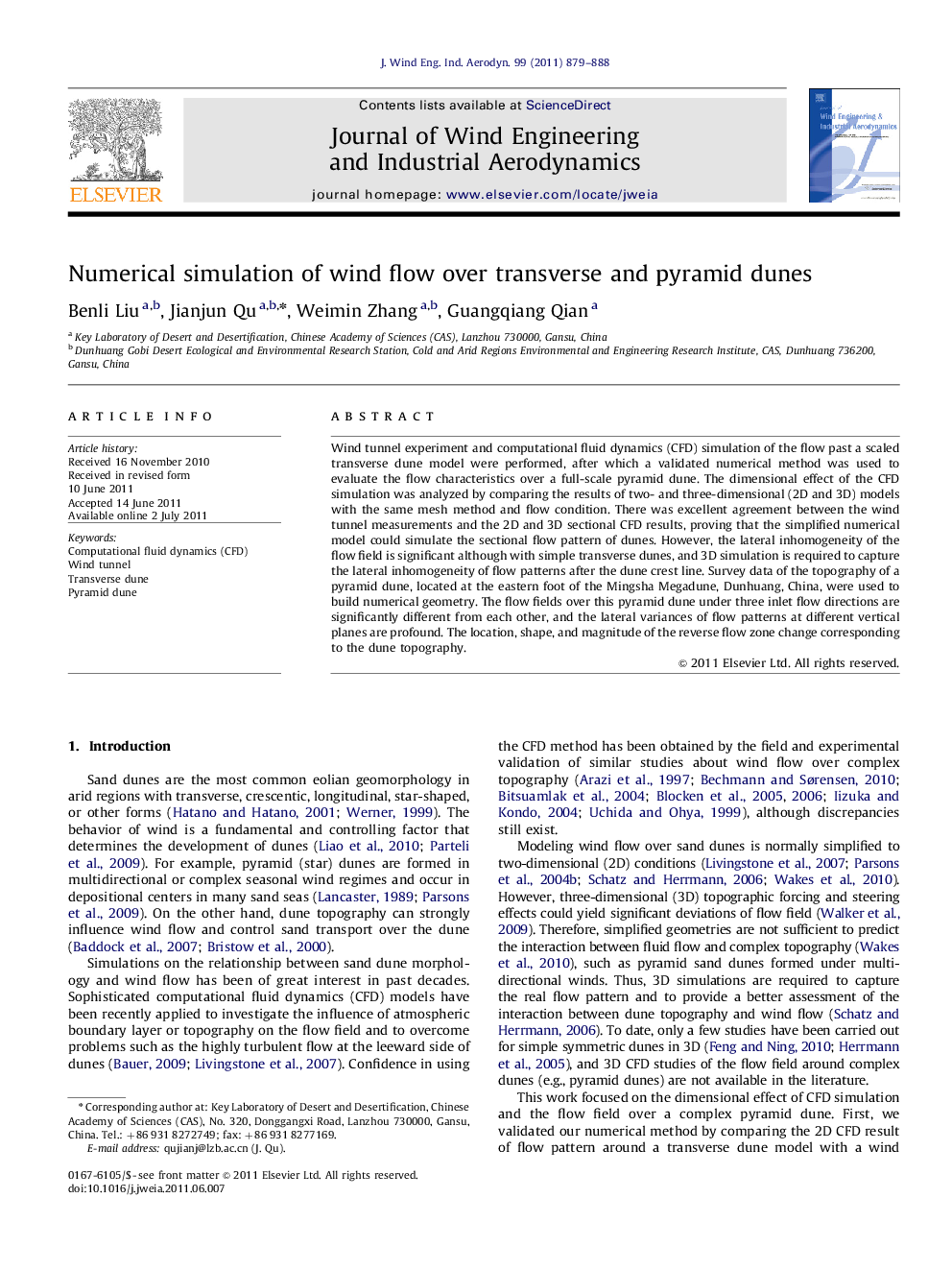| Article ID | Journal | Published Year | Pages | File Type |
|---|---|---|---|---|
| 292593 | Journal of Wind Engineering and Industrial Aerodynamics | 2011 | 10 Pages |
Wind tunnel experiment and computational fluid dynamics (CFD) simulation of the flow past a scaled transverse dune model were performed, after which a validated numerical method was used to evaluate the flow characteristics over a full-scale pyramid dune. The dimensional effect of the CFD simulation was analyzed by comparing the results of two- and three-dimensional (2D and 3D) models with the same mesh method and flow condition. There was excellent agreement between the wind tunnel measurements and the 2D and 3D sectional CFD results, proving that the simplified numerical model could simulate the sectional flow pattern of dunes. However, the lateral inhomogeneity of the flow field is significant although with simple transverse dunes, and 3D simulation is required to capture the lateral inhomogeneity of flow patterns after the dune crest line. Survey data of the topography of a pyramid dune, located at the eastern foot of the Mingsha Megadune, Dunhuang, China, were used to build numerical geometry. The flow fields over this pyramid dune under three inlet flow directions are significantly different from each other, and the lateral variances of flow patterns at different vertical planes are profound. The location, shape, and magnitude of the reverse flow zone change corresponding to the dune topography.
► Wind flow over a scaled transverse dune section was simulated in wind tunnel and compared with both 2D and 3D numerical simulations. ► A full-scale pyramid sand dune model was built to study the interaction between complex dune shape and multi-directional wind regime. ► Simulation results of wind flows over 2D and 3D sand dunes are different, and 3D simulation is necessary to be conducted to capture the real flow pattern.
